|
Home | Selected Publications | Talks | Service | Teaching | Project | Honors | Google Scholar | GitHub
|

|
Kaiyi Zhang, Changgang Zheng, Nancy Samaan, Ahmed Karmouch, and Noa Zilberman IEEE Transactions on Network and Service Management (TNSM) Link | BibTex We introduce MUTA, a novel in-network multi-task learning framework that enables concurrent inference of multiple tasks in the data-plane, without exhausting available resources. MUTA enhances scalability by supporting distributed deployment, where different layers of a multi-task model can be offloaded across multiple switches. |

|
Kaiyi Zhang, Changgang Zheng, Nancy Samaan, Ahmed Karmouch, and Noa Zilberman IEEE HPSR 2025 [CCF B] [Best Paper Award] Paper | Link | BibTex We introduce MUTA; a novel in-network multi-task learning solution. MUTA enables executing multiple inference tasks concurrently in the data-plane, without exhausting available resources. |
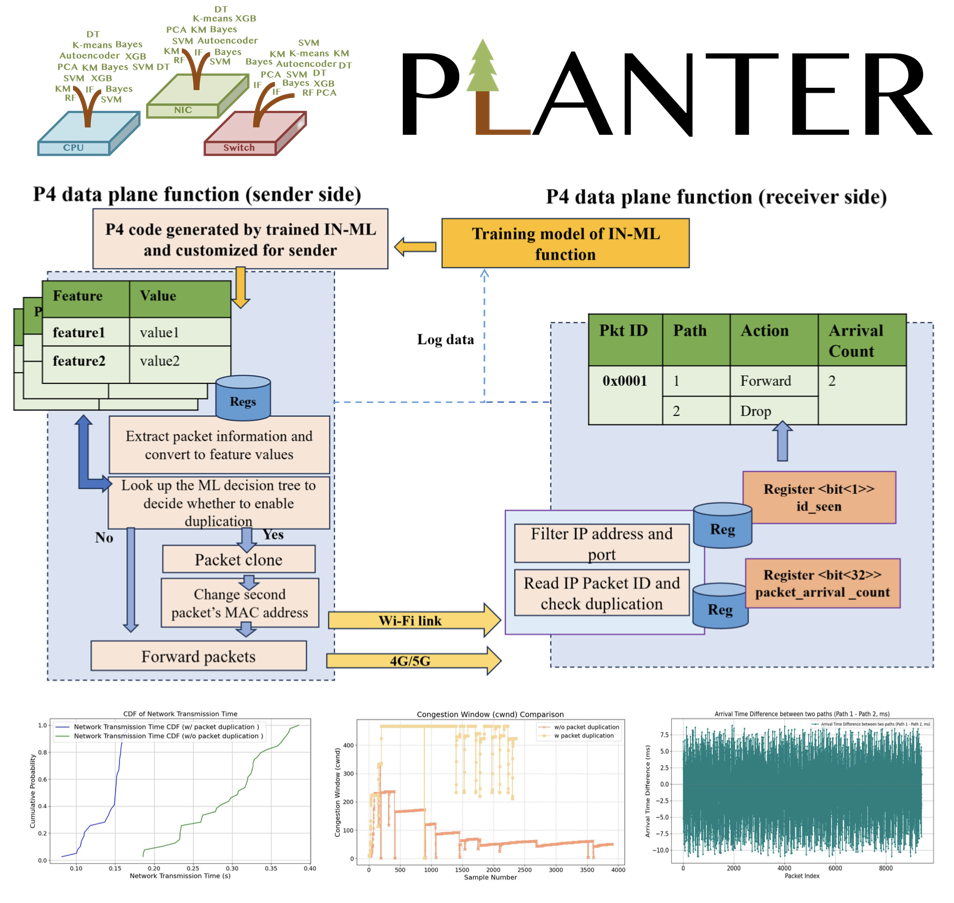
|
Peng Qian, Changgang Zheng, and Noa Zilberman ACM EdgeSys, March 2025 Paper | Link | BibTex We introduce a packet duplication mechanism on dual wireless links, improving LiDAR frame transmission performance. The solution is driven by an integrated In-Network Machine Learning module at a programmable edge device that dynamically detects performance degradation and controls packet duplication. |

|
Changgang Zheng DPhil Thesis, 2024 PDF | Link | BibTex | Code This research addresses the design challenges of in-network ML using a bottom-up approach. It proposes mapping techniques and deployment solutions that overcome existing limitations and enable the Internet to provide in-network ML services on programmable network devices, revolutionising the way we use the Internet for ML. |
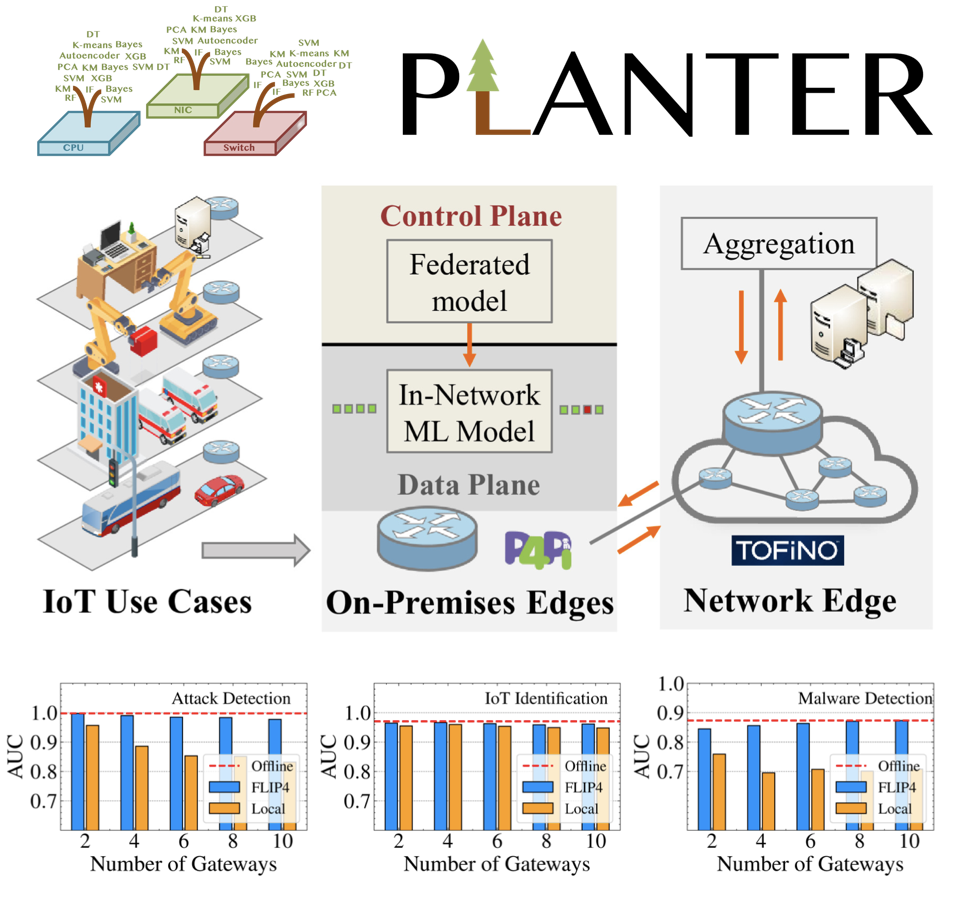
|
Mingyuan Zang, Changgang Zheng, Tomasz Koziak, Noa Zilberman, and Lars Dittmann ACM Transactions on Internet Technology (TOIT), 2024 Paper | BibTex Distributed intelligence on IoT edge has been studied to analyze traffic, but introduces delays and raises privacy concerns. Federated learning can address privacy concerns, but does not meet latency requirements. In this paper, we propose FLIP4: an efficient federated learning-based framework for in-network traffic analysis. FLIP4 consumes fewer resources than previous solutions and reduces communication overheads, making it well-suited for IoT edge traffic analysis. |
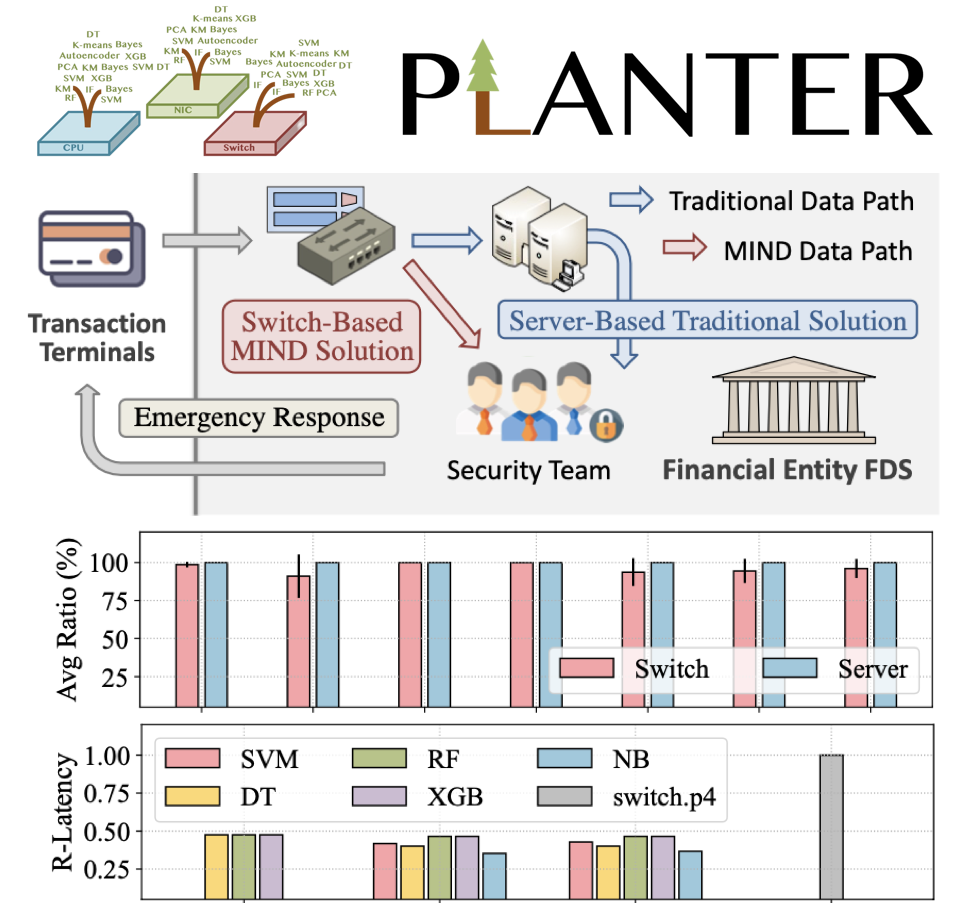
|
Xinpeng Hong, Changgang Zheng, and Noa Zilberman 27th European Conference on Artificial Intelligence (ECAI), 2024 PDF | BibTex Low-latency detection of fraudulent transactions in real-time is highly important as it enables rapid identification and prevention. In this paper, we introduce MIND, conducting ML-based fraud detection within programmable devices. MIND is prototyped on both software and hardware network devices and experimental results demonstrate that MIND detects transaction fraud in real-time, with a throughput of 6.4 terabits per second and microsecond-scale latency. |

|
Xinpeng Hong, Changgang Zheng, Stefan Zohren, and Noa Zilberman 27th European Conference on Artificial Intelligence (ECAI), 2024 PDF | BibTex In this paper, we design and develop a solution that supports both stock mid-price and volatility movement forecasting using commodity switches. Additionally, our solution adapts a hybrid deployment strategy by combining network hardware and servers. Our approach achieves microsecond-scale, ultra-low latency, compared to previous works, while upholding the same level of ML performance as server models. |

|
Masoud Hemmatpour, Changgang Zheng, Noa Zilberman, and Phuong Hoai Ha IEEE SmartGridComm, 2024 PDF | BibTex Decentralized energy transactions within untrusted and non-transparent energy markets in modern Smart Grids expose vulnerabilities and are susceptible to attacks. This paper proposes GridWatch, an effective real-time in-network intelligent framework to detect false data injection attacks. |
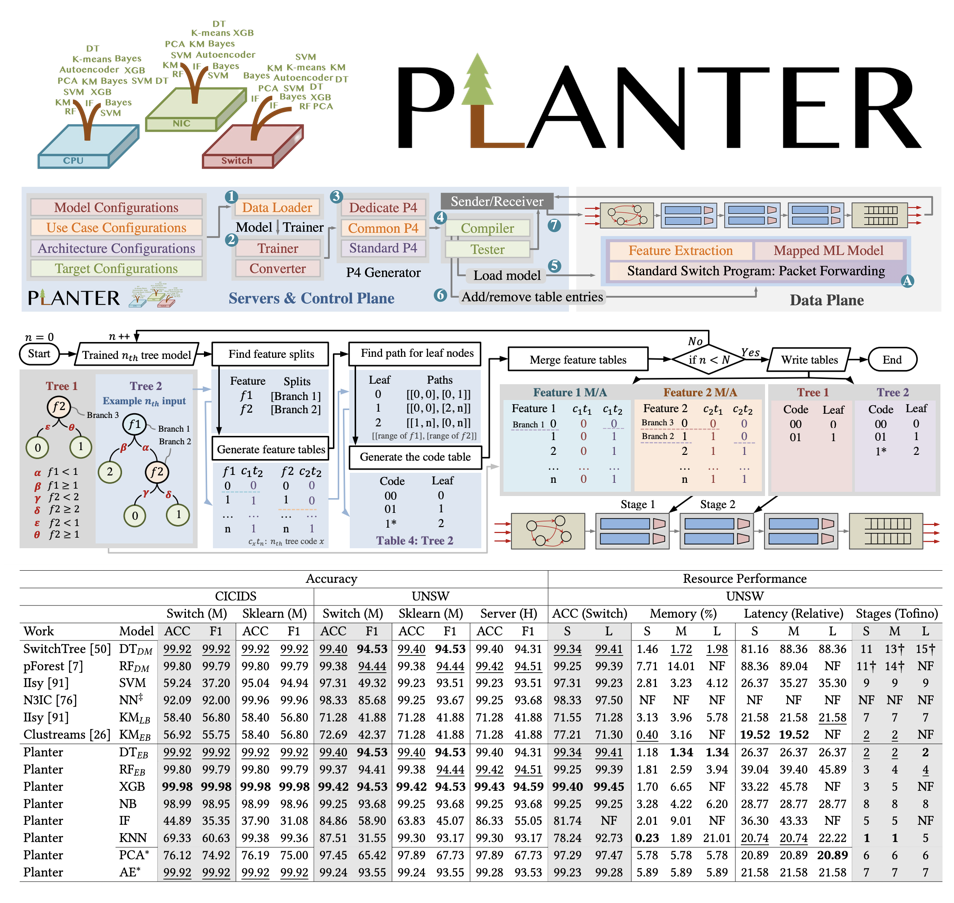
|
Changgang Zheng, Mingyuan Zang, Xinpeng Hong, Liam Perreault, Riyad Bensoussane, Shay Vargaftik, Yaniv Ben-Itzhak, and Noa Zilberman ACM SIGCOMM Computer Communication Review (CCR), 2024 [Acceptance rates comparable to ACM SIGCOMM conference, i.e., under 15%] [Best of CCR] PDF | arXiv (2022) | BibTex | Code | Doc Using programmable network devices to aid in-network machine learning has been the focus of significant research. This work presents Planter, an open-source, modular framework for mapping trained machine learning models to programmable devices. Planter supports a wide range of machine learning models, multiple targets and can be easily extended. |

|
..., Changgang Zheng, ... Noa Zilberman, et al. (sort in alphabetical order) D4.1 Design of Dynamic & Secure Swarm Networking, EU Semantic Low-code Programming Tools for Edge Intelligence (SmartEdge) horizon project, GA 101092908, 2024 PDF | Link | X (Twitter) Deliverable 4.1 is the first iteration of the Dynamic Swarm Networking technical Work Package. The Work Package combines three tasks: (1) Automatic discovery and dynamic network swarm formation (2) Embedded network security and isolation and (3) Hardware accelerated in-network operations. |

|
Changgang Zheng, Zhaoqi Xiong, Thanh T Bui, Siim Kaupmees, Riyad Bensoussane, Antoine Bernabeu, Shay Vargaftik, Yaniv Ben-Itzhak, and Noa Zilberman IEEE/ACM Transactions on Networking, 2024 [CCF A] PDF | arXiv (2022) | BibTex | Code This work presents IIsy, which implements machine learning classification models in a hybrid fashion using off-the-shelf network devices. Besides a range of traditional and ensemble machine learning models, IIsy also supports hybrid classification, achieving near-optimal classification results, while significantly reducing latency and load on the servers. |

|
Masoud Hemmatpour, Changgang Zheng, and Noa Zilberman 27th Conference on Innovation in Clouds, Internet and Networks (ICIN), 2024 Paper | ICIN | BibTex In-network caching expedites data retrieval by storing frequently accessed data items within programmable data planes, thereby reducing data access latency. In this paper, we introduce In-network Caching Shelter (INCS), an in-network machine learning solution implemented on NVIDIA BlueField-2 DPU to mitigate the effect of bots’ traffic. Our evaluation shows that INCS can detect malicious bot traffic patterns with high accuracy. |

|
Changgang Zheng, Xinpeng Hong, Damu Ding, Shay Vargaftik, Yaniv Ben-Itzhak, and Noa Zilberman IEEE Communications Surveys and Tutorials [Impact Factor=35.6] Paper | Link | BibTex In-network ML is a promising technology that provides ML inference services with high throughput, low latency and high power efficiency. This paper provides a holistic review of the fundamentals of in-network ML. It introduces its background and solutions, discusses the existing challenges and open issues, and provides insights for further research explorations. |

|
Xi Liu, Long Ma, Zhen Chen, Changgang Zheng, Ren Chen, Yong Liao, and Shufan Yang 43rd SGAI International Conference on Artificial Intelligence, 2023 Paper | BibTex Sparse-reward reinforcement learning environments pose a particular challenge because the agent receives infrequent rewards, making it difficult to learn an optimal policy. In this paper, we propose NSSE, a novel approach that combines stratified state space exploration with prioritised sweeping to enhance the informativeness of learning, thus enabling fast learning convergence. |
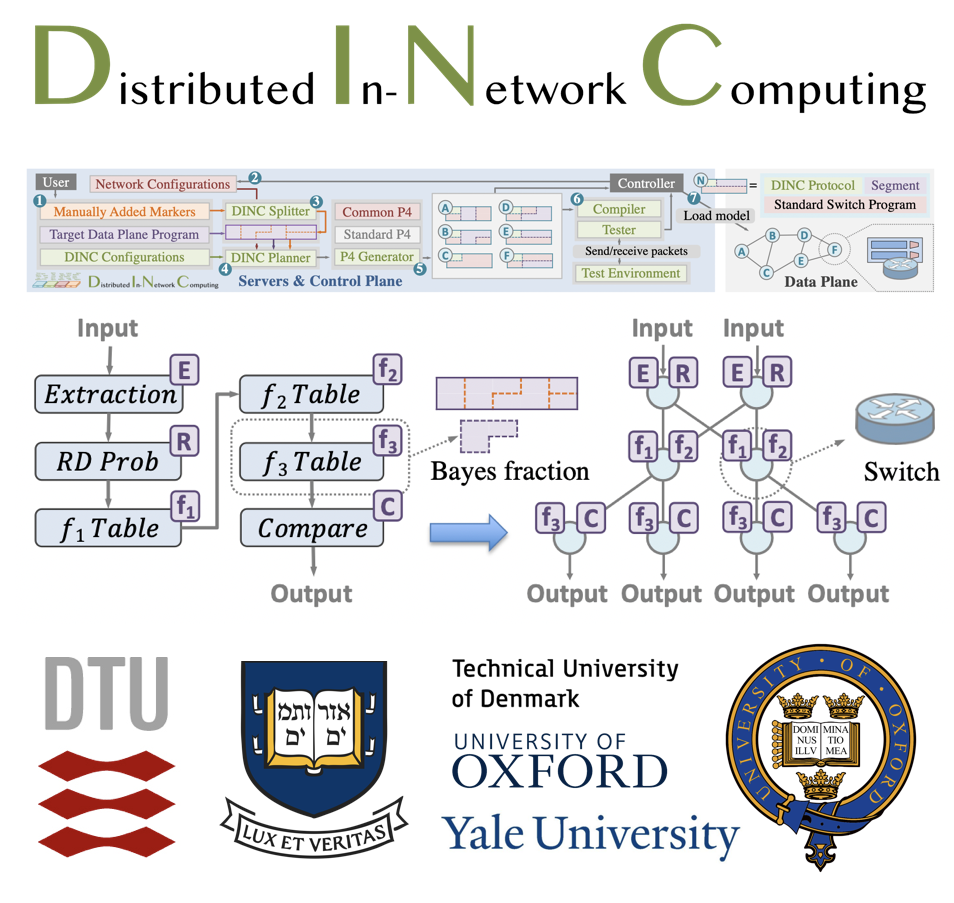
|
Changgang Zheng, Haoyue Tang, Mingyuan Zang, Xinpeng Hong, Aosong Feng, Leandros Tassiulas, and Noa Zilberman ACM CoNEXT'23 & Proceedings of the ACM on Networking, 2023 [Acceptance Rate: 24/129=18.6%] Paper | BibTex | Code Research has focused on enabling on-device functionality, with limited consideration to distributed in-network computing. This paper explores the applicability of distributed computing to in-network computing and presents DINC, a framework enabling distributed in-network computing, generating deployment strategies, overcoming resource constraints and providing functionality guarantees across a network. |
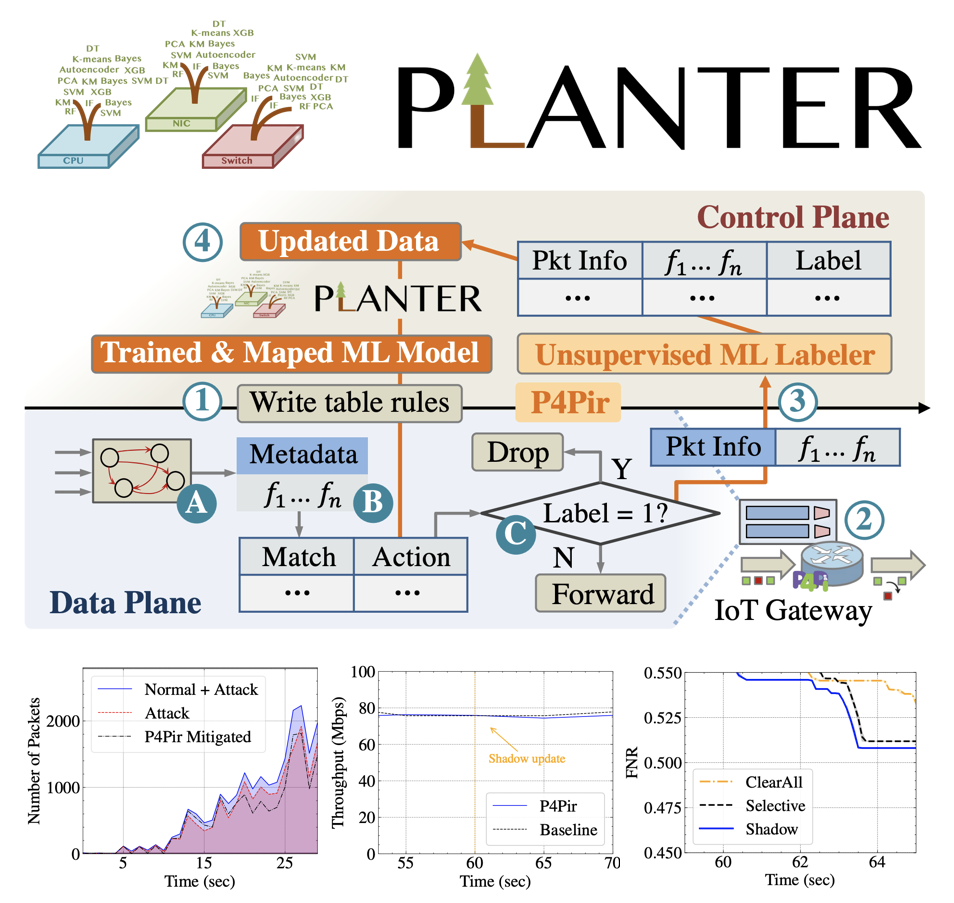
|
Mingyuan Zang, Changgang Zheng, Lars Dittmann, and Noa Zilberman IEEE Internet of Things Journal, 2023 [Impact Factor=10.2] Paper | BibTex | Code Current gateways struggle with dynamic IoT traffic and have limited defence capabilities against attacks with changing patterns. In this work, we present P4Pir, a novel in-network traffic analysis framework for IoT gateways. P4Pir pioneer the continuous and seamless updates of in-network inference models within gateways. |
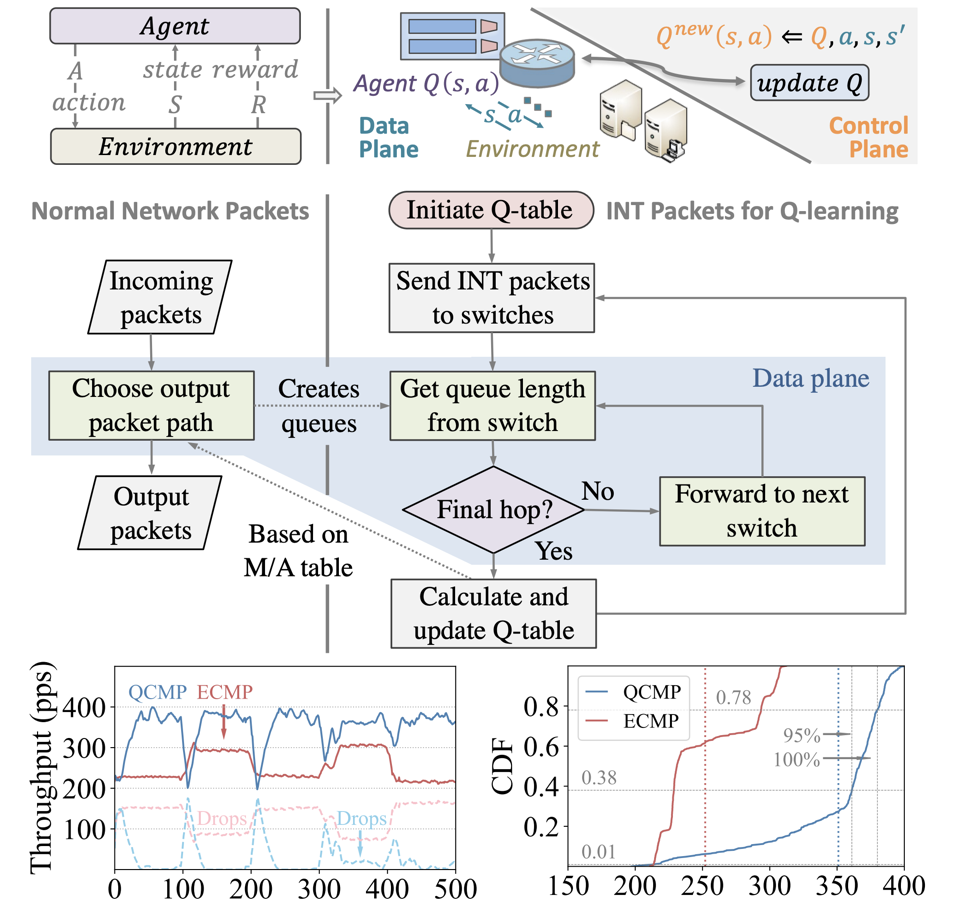
|
Changgang Zheng, Benjamin Rienecker, and Noa Zilberman Proceedings of the ACM SIGCOMM Workshop on Future of Internet Routing & Addressing, 2023 Paper | BibTex | Code Traffic load balancing is a long-time networking challenge. This work presents QCMP, a ReinforcementLearning based load balancing solution implemented within the data plane, providing dynamic policy adjustment with quick response to changes in traffic. Our results show that QCMP requires negligible resources, runs at line rate, and adapts quickly to changes in traffic patterns. |

|
Mingyuan Zang, Changgang Zheng, and Lars Dittmann, Noa Zilberman MobiUK, 2023 Paper | Slides | BibTex IoT devices are widely and dynamically deployed in diverse use cases, leading to a surge of security threats that were previously overlooked. We propose P4Pir, an in-network traffic analysis solution, to enable continuous learning and consistent ML updates. P4Pir achieves real-time multi-protocol data collection, in-network ML-based attack mitigation, and hitless runtime ML updates. |
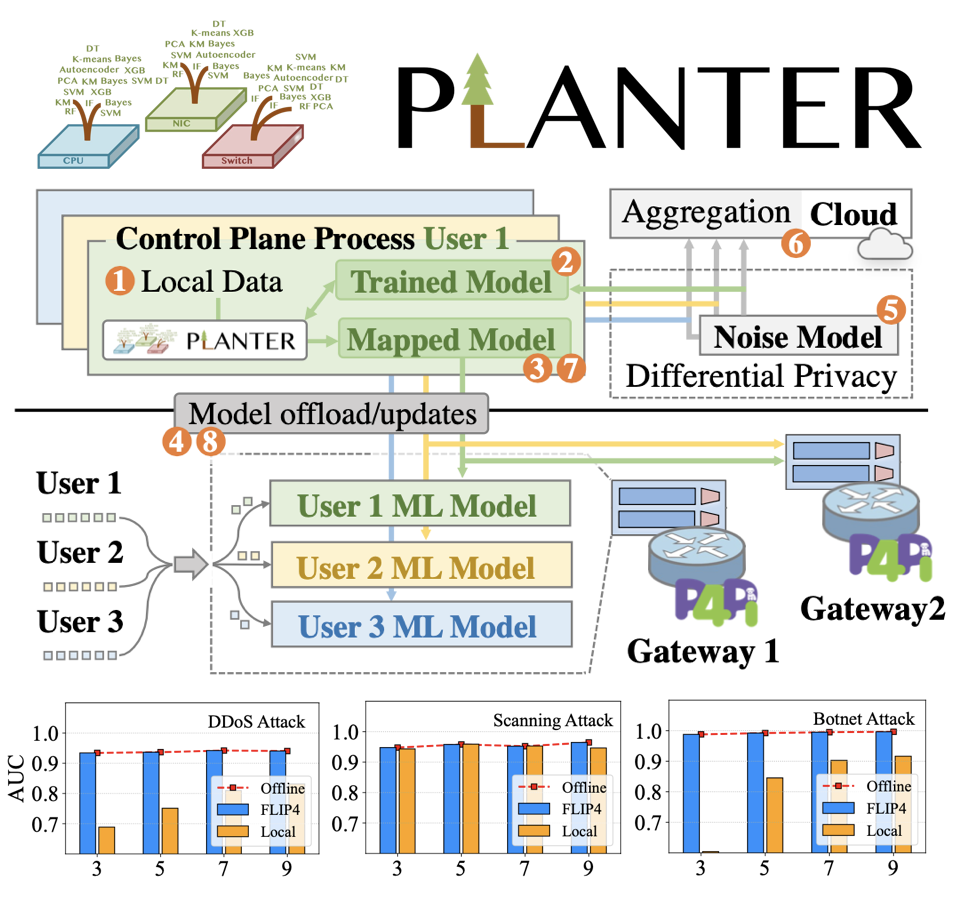
|
Mingyuan Zang, Changgang Zheng, Tomasz Koziak, Noa Zilberman, and Lars Dittmann Security for IoT Networks and Devices in 6G (Sec4IoT), IFIP Networking 2023 Paper | BibTex The rise of IoT-connected devices has led to an increase in collected data for service and traffic analysis, but also to emerging threats and attacks. To address these concerns, we present FLIP4, a distributed in-network attack detection framework based on federated tree models. |
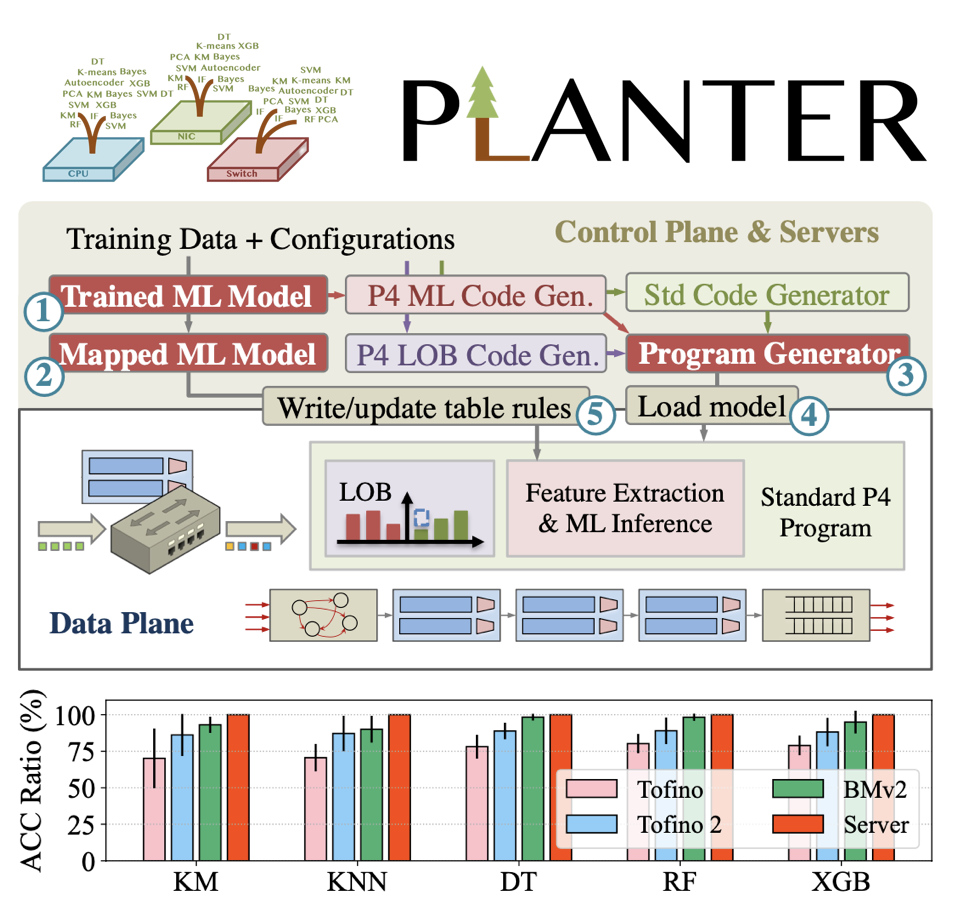
|
Xinpeng Hong, Changgang Zheng, Stefan Zohren, and Noa Zilberman IEEE 24rd International Conference on High Performance Switching and Routing (HPSR), 2023 Paper | BibTex Machine learning is driving the evolution of algorithmic trading, but the demands for fast execution speed remain. In this paper, we present LOBIN, providing machine learning based market prediction by building limit order books within programmable switches, using high-frequency market data feeds. |

|
Juan Marcelo Parra-Ullauri, Chen Zhen, Antonio García-Domínguez, Nelly Bencomo, Changgang Zheng, Juan Boubeta-Puig, Guadalupe Ortiz, Shufan Yang arXiv, 2023 Paper | BibTex In this paper, we introduce a novel history-aware epsilon-greedy logic for hyperparameter optimisation that adjusts the hyperparameters at runtime based on the analysis of the agent’s performance over time windows in a single agent’s lifetime. Our experimental results show that the proposed framework significantly improved performance compared to traditional hyperparameter tuning approaches. |

|
Bernard M. Cobbinah, Christian Sorg, Qinli Yang, Arvid Ternblom, Changgang Zheng, Wei Han, Liwei Che, Junming Shao Medical Image Analysis, 2022 Link | BibTex We propose an adversarial autoencoder method to reduce MRI variations in AD, which is robust to variations that exist in multi-center MRI-scans in AD classification. The proposed method gives better performance than baseline approaches and provides a fully automatic end-to-end approach for AD classification. |
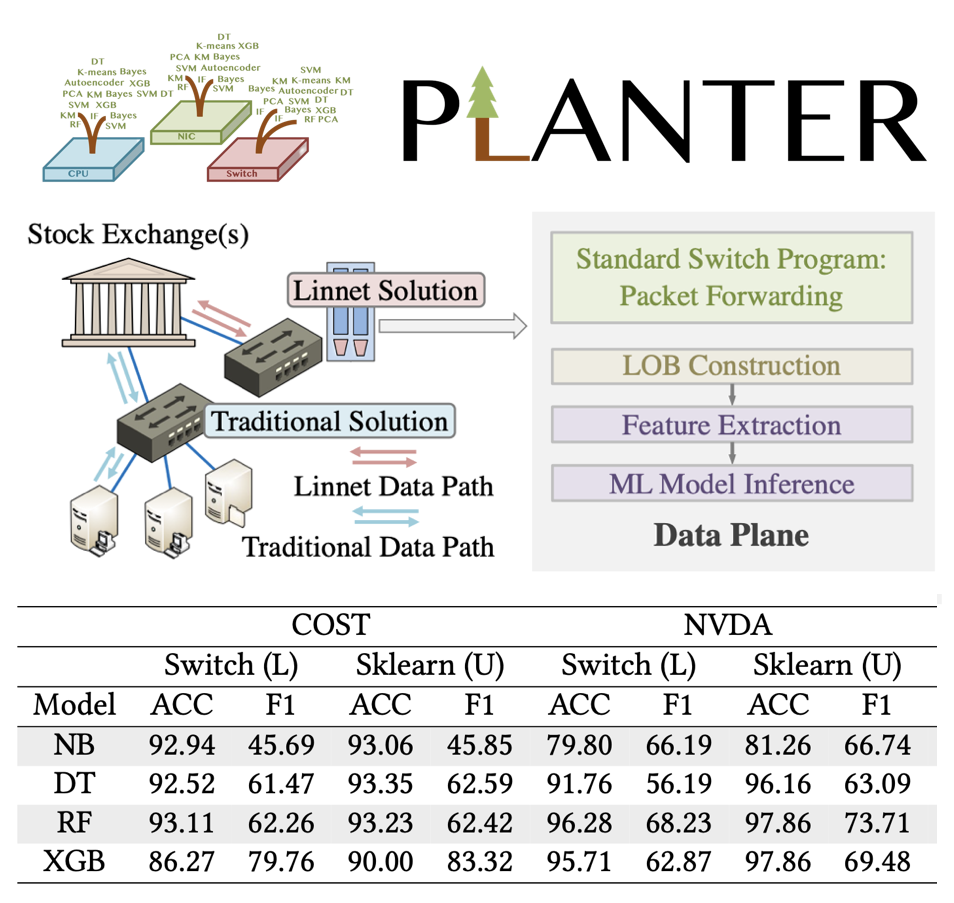
|
Xinpeng Hong, Changgang Zheng, Stefan Zohren, and Noa Zilberman Proceedings of the SIGCOMM'22 Poster and Demo Sessions Paper | BibTex | Poster Many trading applications require very short response times, which cannot always be supported by traditional machine learning frameworks. We present Linnet, providing in-network financial market prediction. Linnet demonstrates the potential to predict future stock price movements with high accuracy and low latency. |
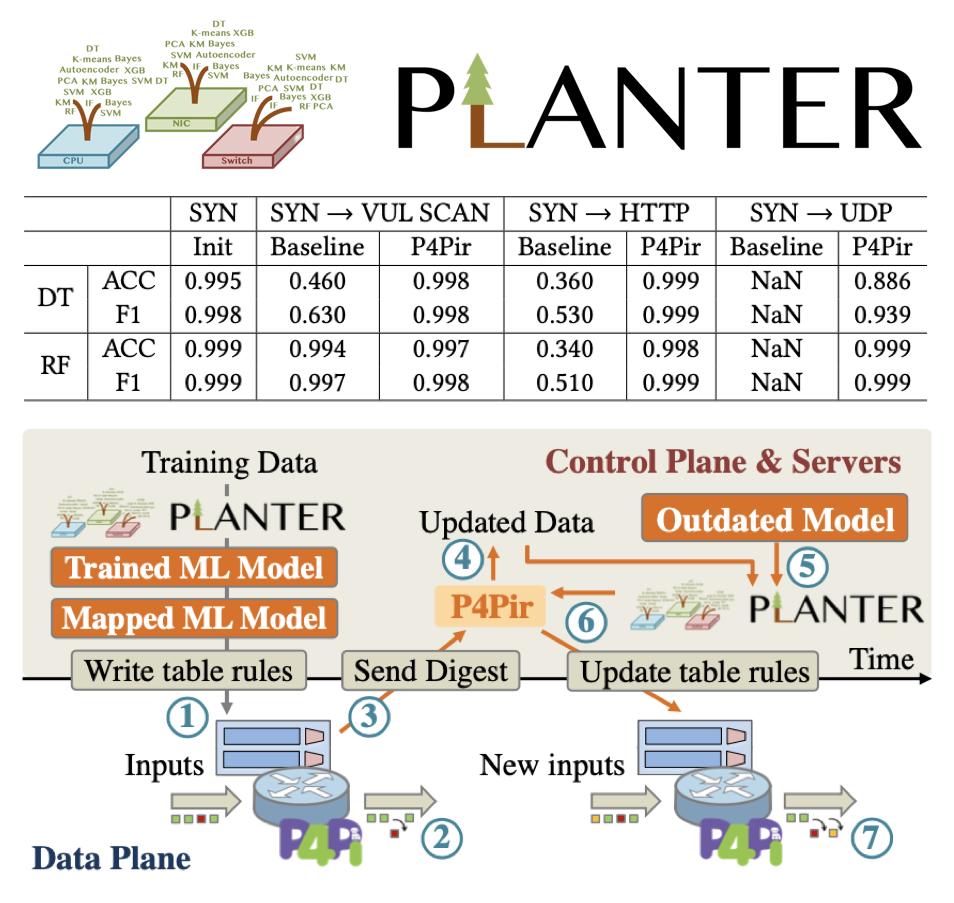
|
Mingyuan Zang, Changgang Zheng, Radostin Stoyanov, Lars Dittmann, and Noa Zilberman Proceedings of the SIGCOMM'22 Poster and Demo Sessions Paper | BibTex | Poster | Code Traditional hard-coded gateways fail to flexibly process diverse IoT traffic from highly dynamic devices. We present P4Pir, an in-network traffic analysis solution for IoT gateways. Preliminary results show that P4Pir can detect emerging attacks accurately based on retraining and updating the machine learning model. |
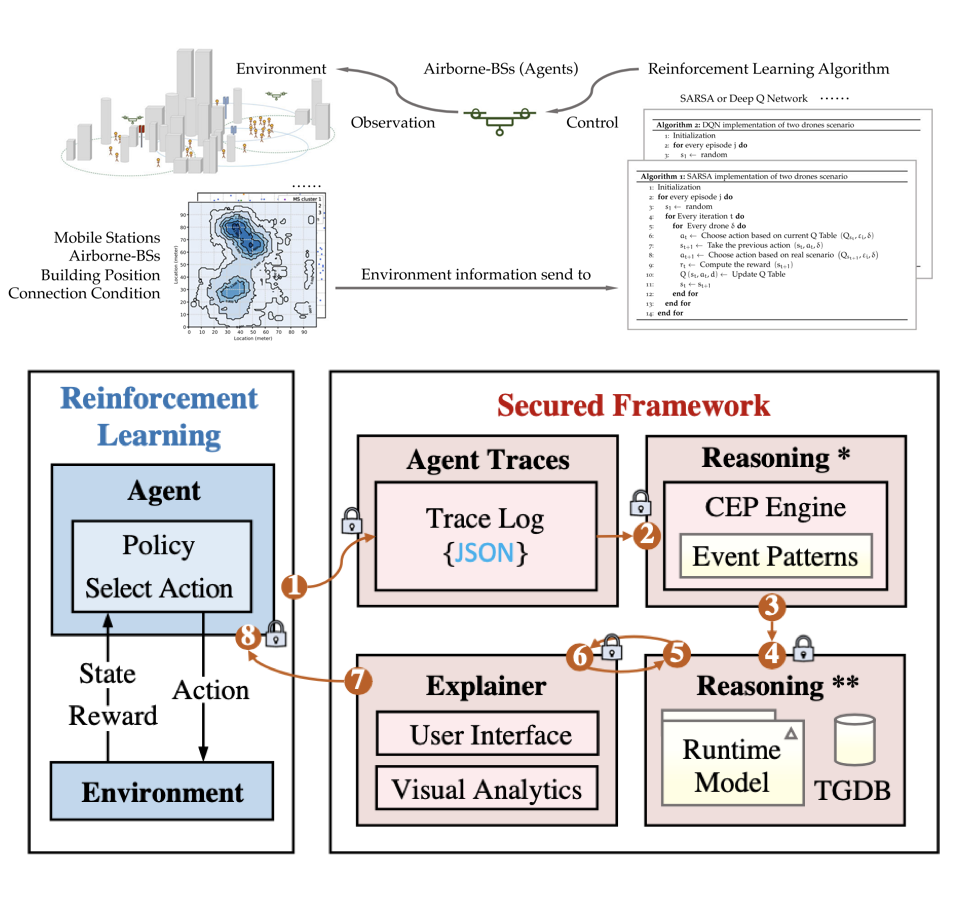
|
Changgang Zheng, Chen Zhen, Yonghai Xie, Shufan Yang 5th IEEE Conference on Dependable and Secure Computing (IEEE DSC 2022), Link | BibTex Appropriate vulnerability management is difficult to achieve when applying deep RL in a real-life problem. We propose a framework that allows users to focus on the algorithm of reasoning, trust, and explainability in accordance with human perception, followed by exploring potential threats, especially adversarial attacks and countermeasures. |
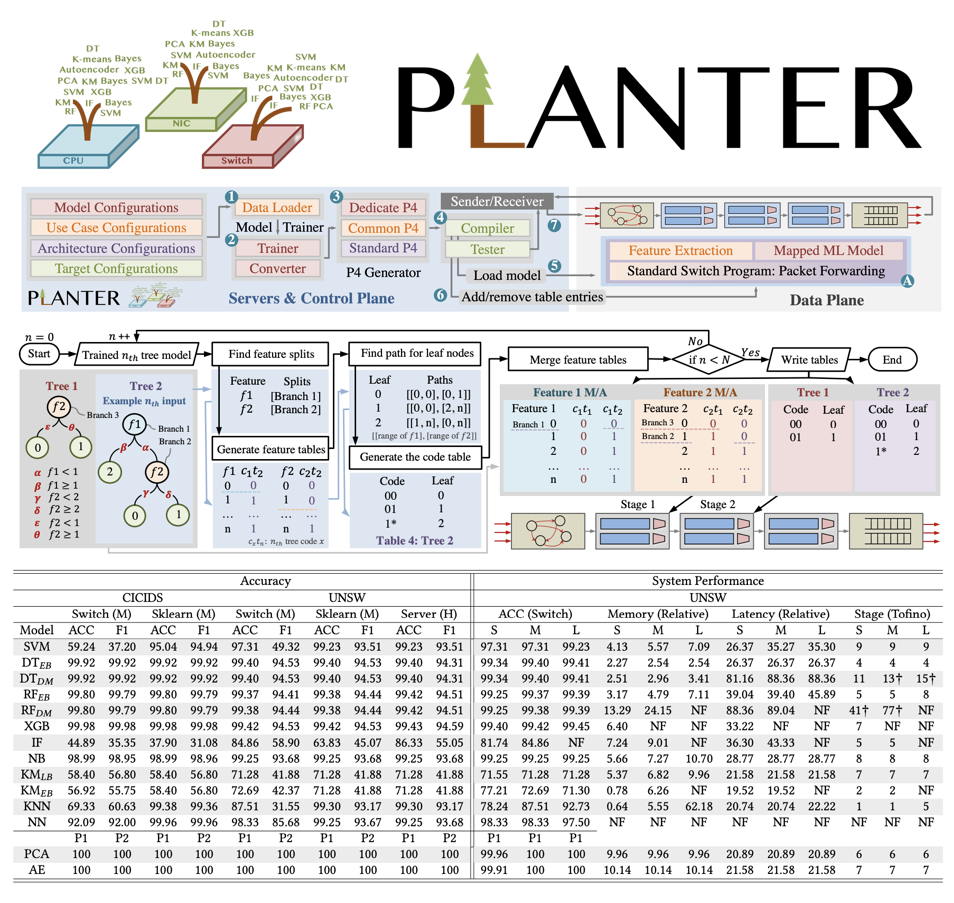
|
Changgang Zheng, Mingyuan Zang, Xinpeng Hong, Riyad Bensoussane, Shay Vargaftik, Yaniv Ben-Itzhak, and Noa Zilberman arXiv, 2022 Paper | BibTex | Code Using programmable network devices to aid in-network machine learning has been the focus of significant research. This work presents Planter, an open-source, modular framework for mapping trained machine learning models to programmable devices. Planter supports a wide range of machine learning models, multiple targets and can be easily extended. |
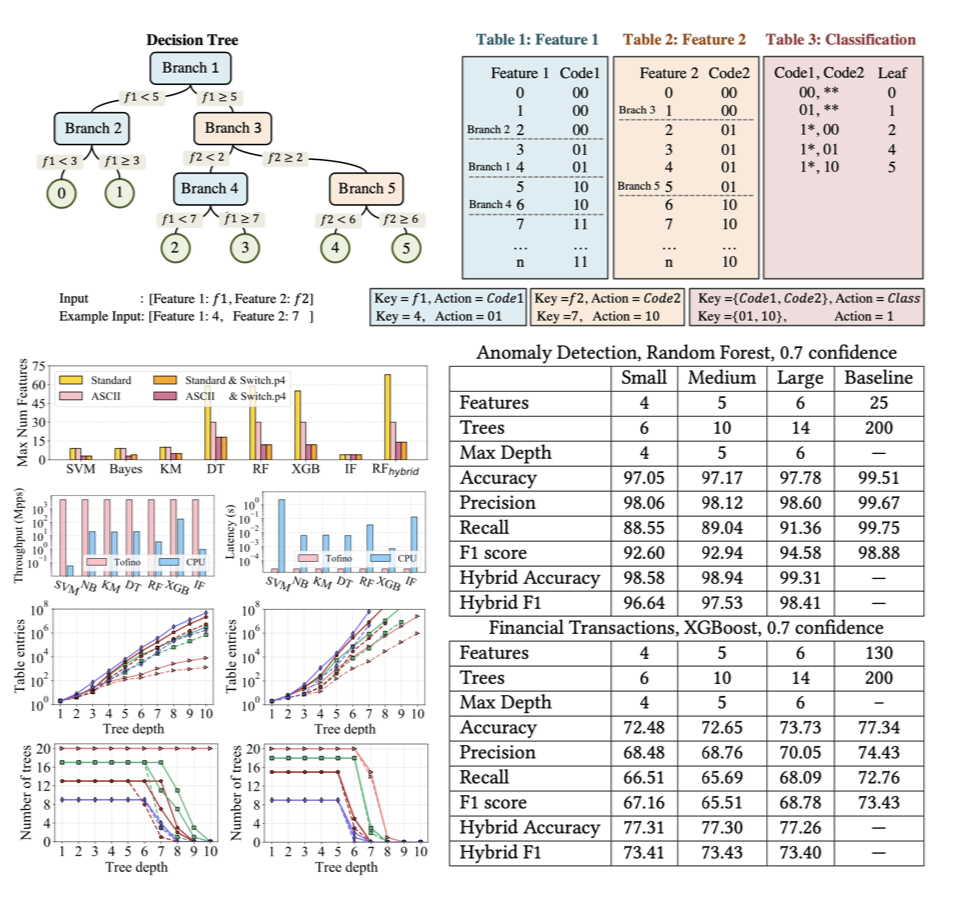
|
Changgang Zheng, Zhaoqi Xiong, Thanh T Bui, Siim Kaupmees, Riyad Bensoussane, Antoine Bernabeu, Shay Vargaftik, Yaniv Ben-Itzhak, and Noa Zilberman arXiv, 2022 Paper | BibTex This work presents IIsy, which implements machine learning classification models in a hybrid fashion using off-the-shelf network devices. Besides a range of traditional and ensemble machine learning models, IIsy also supports hybrid classification, achieving near-optimal classification results, while significantly reducing latency and load on the servers. |

|
Juan Marcelo Parra-Ullauri, Antonio García-Domínguez, Nelly Bencomo, Changgang Zheng, Chen Zhen, Juan Boubeta-Puig, Guadalupe Ortiz, Shufan Yang Software and Systems Modeling, 2021, 2022 SoSyM-First Paper Award Paper | BibTex This work presents ETeMoX, an architecture based on temporal models to keep track of the decision-making processes of RL systems. The architecture also integrates complex event processing, an event-driven approach, for detecting matches to event patterns that need to be stored, instead of keeping the entire history. |
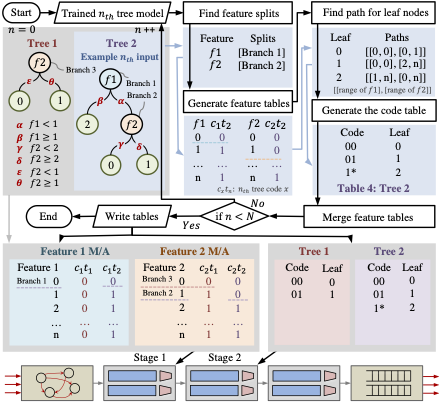
|
Changgang Zheng, Noa Zilberman Proceedings of the SIGCOMM'21 Poster and Demo Sessions Paper | Short Video | Slides | BibTex | Poster | Code Data classification within the network significantly benefits reaction time, servers offload and power efficiency. This work designs an algorithm for efficient mapping of ensemble models, such as XGBoost and Random Forest, to programmable switches. The proposed method overlaps trees within match-action tables, achieves high accuracy and low resource overhead. |

|
Wei Han, Changgang Zheng, Rui Zhang, Jinxia Guo, Qinli Yang, Junming Shao Information Sciences, 2021 Paper | BibTex This work proposes the MNN-CH, a novel modular neural network that is constructed with explored category hierarchy. The basic idea is learning to learn an optimized category hierarchy to decompose complex patterns. And specific patterns are imposed into corresponding modules to realize a transparent design of the neural network. |

|
Changgang Zheng, Shufan Yang, Juan Marcelo Parra-Ullauri, Antonio Garcia-Dominguez, Nelly Bencomo IEEE Transactions on Emerging Topics in Computational Intelligence, 2021 Link | Code | BibTex Achieving an optimal global goal remains a persistent obstacle for collaborative multiagent systems. This work develops a reward-reinforced generative adversarial network to represent the distribution of the value function, replacing the approximation of Bellman updates. We demonstrated our method is resilient and outperforms other conventional reinforcement learning methods. |

|
Mengyu Ge, Han Liu, Yilin Liu, Changgang Zheng 2019 International Conference on Artificial Intelligence and Advanced Manufacturing (AIAM) Link | BibTex Unconstructed data mining is a challenging task in the current data mining research domain. In this work, we examine a large number of tables that existed in the bioenergy field and propose a framework for automatically acquiring data from papers in PDF format and outputting the table information. |
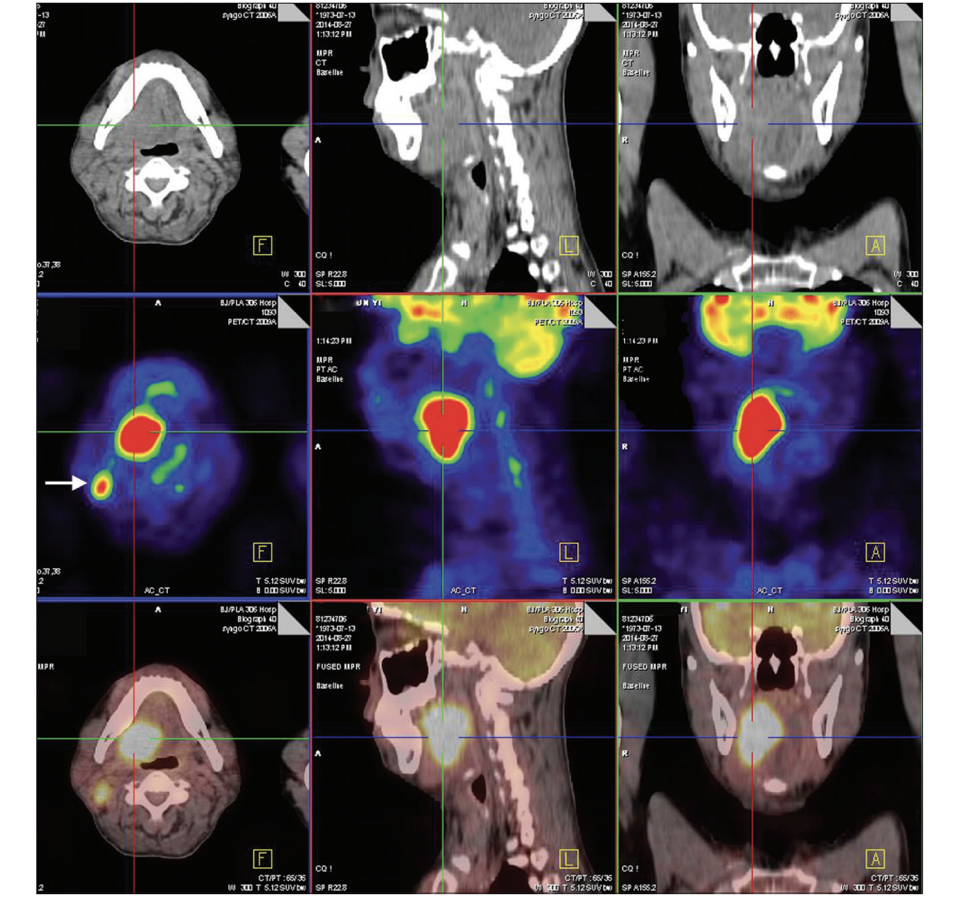
|
Dong Zheng, Lixuan Niu, Wenpeng Liu, Changgang Zheng, Ruyi Yan, Liyan Gong, Zhongxing Dong, Jun Fei, Ke Li Journal of Cancer Research and Therapeutics, 2019 Paper | BibTex Tongue carcinoma is one of the most common oral and maxillofacial malignant tumors worldwide, maximum standardized uptake value has been widely used in cancer research. This study aims at investigating the relationship between them and whether SUV parameters can predict lymph node metastasis. |

|
Dong Zheng, Lixuan Niu, Wenpeng Liu, Changgang Zheng, Ruyi Yan, Liyan Gong, Zhongxing Dong, Ke Li, Jun Fei Dentomaxillofacial Radiology, 2019 Paper | BibTex This study investigates the relationship between maximum standardized uptake value (SUVmax) of 18F-FDG PET/CT and clinicopathological features of oral squamous cell carcinoma (OSCC), in order to formulate a better clinical guideline. |

|
Changgang Zheng, Han Liu, Mengyu Ge, Yilin Liu Proceedings of the 2019 International Conference on Computer, Network, Communication and Information Systems (CNCI 2019) Paper | BibTex Finding a way within a given maze is a common problem for mobile robots. Existing routing algorithms usually can not able to find the solution to a filled path. This work presents a new path routing approach for mobile robots to get an intuitive filled path, which can solve the difficulty of modelling and be well applied to realistic problems. |

|
Wei Han, Christian Sorg, Changgang Zheng, Qinli Yang, Xiaosong Zhang, Arvid Ternblom, Cobbinah Bernard Mawuli, Lianli Gao, Cheng Luo, Dezhong Yao, Tao Li, Sugai Liang, Junming Shao NeuroImage: Clinical, 2019 Paper | BibTex Functional and structural brain connectivity in the triple network is consistently altered in schizophrenia and major depressive disorder. This study proposes the SCNMF to extract distributed multi-modal brain patterns to distinguish schizophrenia and major depressive disorder in a latent low-dimensional space of the triple brain network. |

|
Shaojun Bi, Changgang Zheng, Congwei Yang, Jinjun Zheng, Chengyan He, Jiaxing Liu Proceedings of the 31st International Technical Meeting of the Satellite Division of The Institute of Navigation (ION GNSS+ 2018) Paper | BibTex In allusion to the phenomenon that the multipath value of BeiDou MEO satellite of its regional system varies with the elevation angle of the observation station, we design and implemented an in-orbit test on a BeiDou test satellite. The result shows that the influence of the multipath effect of BeiDou global system is less than 0.1 m. |